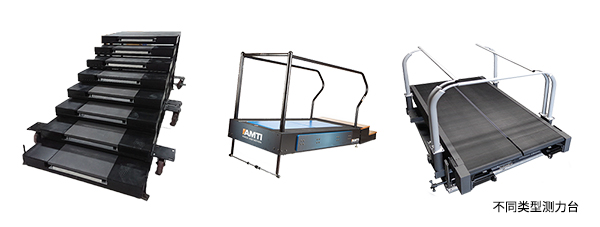In recent years, sports science, rehabilitation/sports medicine, athletic training, physical education, mechanical engineering, psychology, and human-machine ergonomics research have continuously evolved and innovated. In sports science research, fully understanding human movement and acquiring accurate motion data is crucial.

Introduction to Motion Data Classification
The motion data obtained in the research is mainly divided into three categories: kinematic parameters, dynamic parameters, and electromyography parameters.
Kinematic Parameters
This includes data such as position, speed, acceleration, angle, distance, and posture, for example, human joint flexion and extension, abduction and adduction, internal and external rotation, and parameters like stride length, speed, and frequency during running.

The movements that generate this type of data usually occur at high speeds with significant positional changes in a very short time, thus data collection needs to accommodate high precision and high sampling frequencies.

Infrared optical motion capture technology can acquire this data with high precision and low latency, such as the angle changes of the shoulder, elbow, and wrist joints during a basketball shot, the action stability of fencers, or the body posture of high jumpers and long jumpers during the takeoff process. These difficult-to-obtain kinematic parameters can be captured using infrared optical motion capture technology.
Dynamic Parameters

The main research focuses on the interaction of forces during movement, capturing kinematic signals. For example, a force platform equipped with multiple piezoresistive sensors can collect pressure changes at different parts of the platform, enabling the collection of dynamic data during human walking and running.
Myoelectric Parameters

The bioelectrical parameters of muscle contractions can be used to understand the intensity of muscle load during human movement and the state of neural functions. Surface electromyography (EMG) devices can measure the electrical signals accompanying muscle contractions and generate electromyograms, which are an important non-invasive method for detecting muscle activity from the body's surface.
Integrated Motion Analysis System
Efficient research and analysis of human motion, including ground reaction forces, interjoint forces, and muscle contraction and relaxation, require the integration of different data-measuring devices into a motion analysis integrated system.

For instance, when a person jumps from a height to the ground, the body performs a buffering action by bending the knees. As this action proceeds, the ground reaction force, the forces between the human ankle and knee joints, and the level of stimulation of several lower limb muscles all change continuously.
By integrating an infrared optical motion capture system for capturing human posture data, a dynamometry device for reflecting kinetic data such as ground reaction forces, and electromyography equipment for muscle stimulation intensity, efficient data acquisition and analysis can be achieved through synchronous data collection.

The NOKOV 3D motion analysis system is a mature solution designed for the acquisition of various motion data, incorporating an infrared optical motion capture system, 3D force platforms, and surface electromyography instruments. Custom solutions can be tailored according to different project requirements, allowing for the synchronized and efficient collection of data.
NOKOV 3D motion analysis system application examples
Southern University of Science and Technology School of Mechanical Engineering
A motion capture system composed of 12 NOKOV motion capture cameras, combined with a 3D force plate, surface electromyography, and plantar pressure measurement devices, can be used to build an integrated motion analysis system. This system analyzes kinematic data, such as gait parameters during human walking and climbing stairs, to address compatibility issues between the natural movements of robots and humans and to conduct research related to robotic dynamic prostheses.
Case Detailshttps://www.nokov.com/support/case_studies_detail/research-and-development-of-Biomechatronics-Robots.html

College of Physical Education, Taiyuan University of Technology
An optical motion capture system with 12 cameras, coupled with two force platforms, is used for motion analysis of basketball players. It collects both kinematic and dynamic parameters of various sports activities, including basketball and running.
Case Detailshttps://www.nokov.com/support/case_studies_detail/Application-of-Motion-Capture-in-Motion-Digitization.html

By creating a database with an integrated motion analysis system, human 3D movement posture data obtained through motion capture technology is bound to a human model in software, enabling the generation of standard basketball movement teaching model animations. This allows for the rapid identification and correction of deficiencies through comparisons of the same movements' segments.
Shanghai Haijis Health Management Consulting Co., Ltd
Shanghai Haiji Health Management Consulting Co., Ltd. utilized eight NOKOV motion capture cameras, combined with a force platform and surface EMG, to obtain human joint coordinates and the relative posture between the trunk segments, completing the development of a human static posture analysis system.
Case Detailshttps://www.nokov.com/support/case_studies_detail/Development-of-body-posture-evaluation-system.html